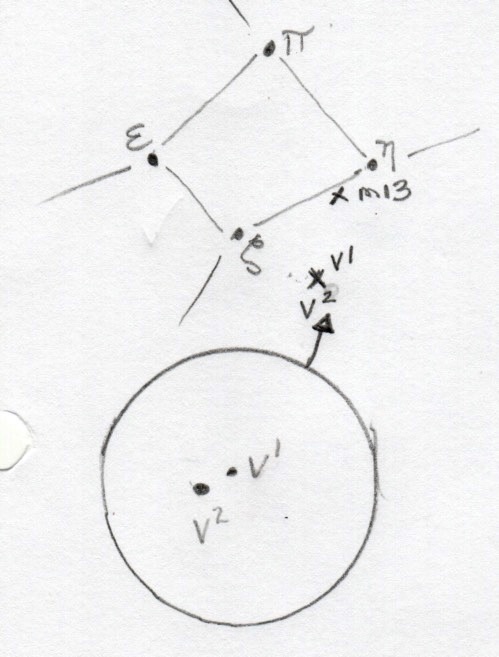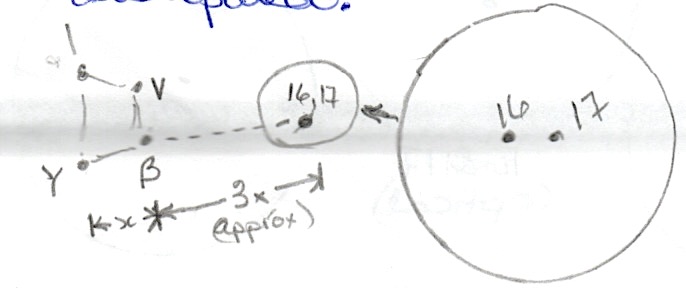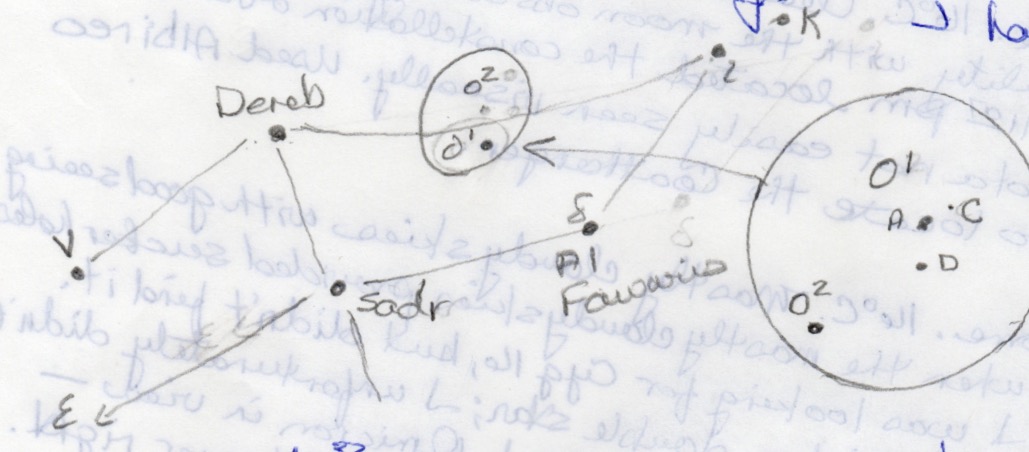Moon: Waning Gibbous (58.4%)
Aurora Borealis
Occultation: Moon-Aldebaran
Constellations: Corona Borealis, Cygnus, Delphinus, Draco, Scorpius
Asterism: Teapot
Stars: Aldebaran, Omicron Cygni
Messier: M11
Satellites: (2)
Location: Site 15, Kejimkujik National Park
Date: 2017-09-12
Time: 10:00 AM - 11:15 AM + 8:10 PM - 10:50 PM ADT
Instrument: Visual + Binoculars (10x30 IS)
Transparency: Good (3)
Seeing: Good (3)
Temperature: 16º C - 10º C
This was the second day and night hubby and I were with Dave and Christine in the back country at our first Big Muise Island Star Party. The day was beautifully clear and warm, another great day to lay in the hammock and peruse the Observer's Handbook chapters I hadn't read yet. In the evening, there were clear skies overhead with a light breeze - and our first sighting of the Northern Lights from Kejimkujik National Park.
Occultation: Moon and Aldebaran (in Taurus)
Time: 10:00 AM - 11:15 AM
Instrument: Visual
The sketch and photo of the occultation is recorded in Lunar Session - September 12, 2017.
Aurora Borealis
Time: 8:10 PM
Instrument: Visual
Dave noticed an unusual brightness on the N-NE horizon that we thought perhaps was light pollution. However, when the brightness changed depth and shape, Jerry took a time lapse and confirmed it was indeed an aurora due to a solar flare.
Teapot + Scorpius
Time: 8:20 PM
Instrument: Visual
As we sat on the beach just past sunset, we watched as the stars of the Teapot in Sagittarius and those of Scorpius became visible in the south sky and provided guidance as to where the Milky Way would appear. Both were well above the horizon at this time of night. All 5 stars of the Teapot were easily located and identified. Antares showed as red in the sky and 3 stars in the scorpion's arc to its west were also visible.
| Satellite (LAGE052) Time: 9:28 PM ADT Instrument: Binoculars Was looking for Corona Borealis ν1 and ν2 when a satellite came into my FOV near M13. Followed it through Ophiuchus and lost it in Sagittarius. |
Satellite (ORBCOMM FMI[+]) Time: 9:50 PM ADT Instrument: Binoculars Looking for the Coathanger when it came into my view near Altair and travelled down Aquila to λ Aquila where it disappeared. |
Delphinus
Time: 9:56 PM ADT
Instrument: Binoculars
S&T Chart Reference: 64
All 5 stars in the constellations were seen with binoculars.
M11 (Wild Duck Cluster)
Time: 10:02 PM ADT
Instrument: Binoculars
S&T Chart Reference: 67
Looked for the semi-circle of stars on the eastern border of the Milky Way above the Teapot. Used my binocular to easily find this small very bright cluster.
|
Corona Borealis - ν1 & ν2 |
 |
|
Draco |
 |
|
Cygnus & Omicron (ο) Cygnus With his assistance, I did confirm I could see ο2, ο1-A, ο1-D but ο1-C escaped me. Dave then showed it to me in his telescope. There was ο1-C at 2 o'clock to ο1-A. Very happy at finding it! Attempted to find 16 Cygnus but with such a rich star field and my dry eyes watering, I left it for another night. |
 |